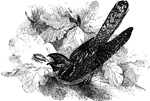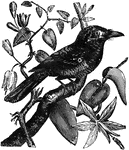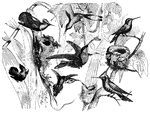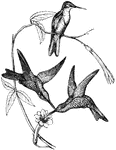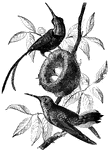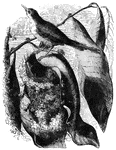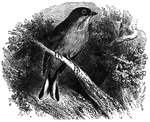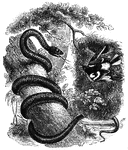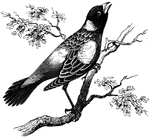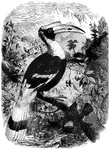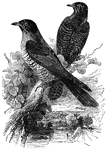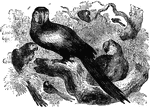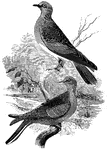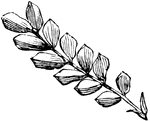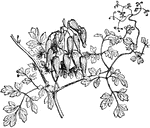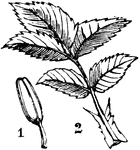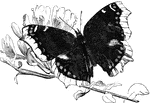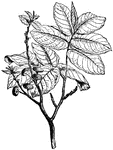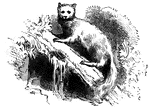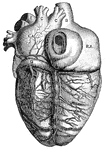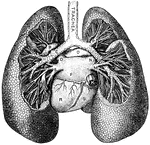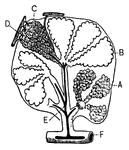
Passeres
An assortment of passeres, one order of birds. The legs, feet, and talons are generally smaller than…
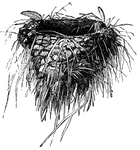
Nest of the Common European Swallow
Nest of the common European swallow, which can be found in old wells and mines, under the roofs of barns…
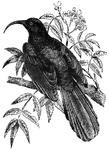
Namaqua Bee-Eater
The namaqua bee-eater, native to Western Africa. Its diet consists of insects, particularly bees and…
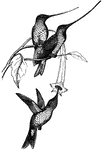
Hummingbirds
A group of humming birds with particularly long and narrow beaks, well-adapted for sipping nectar from…

Hummingbirds
Four humming birds, two of which are resting on a branch, while the other two cavort in the air above.
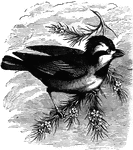
Crested Pardalotte
Usually living around small mountain streams, large spiders have been known to attack and eat the vrested…
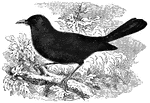
Blackbird
Black with a yellow bill, the blackbird feeds mostly on larvae, snails, worms, insects, and fruits.
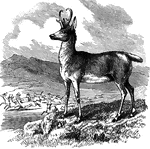
Prong-horn
"The only kind of antilope found on this continent. It differs from all the other members of the tribe…
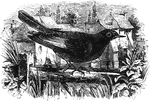
Black Redstart
A black redstart perched on a branch in front of a stone building. It greatly resembles the redstart.
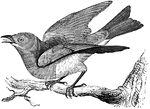
Bluebird
The bluebird feeds on a diet of insects and spiders in the summer and berries in the winter. It usually…
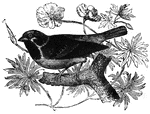
Wood Sparrow
Somewhat aloof from human habitiation, the wood-sparrow can often be seen mingline with other sparrow…

Union Pacific
"The big loop on the Georgetown branch of the Union Pacific, Colorado."—E. Benjamin Andrews 1895

Chambers
Appearance of the chambers. The miners, when they branch off from the main shaft or avenue, leave pillars…
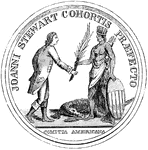
Stewart Medal Front
"Medal awarded to Major Stewart. This represents the medal the size of the original. The device is America…
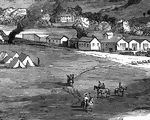
Village of Clarksburg
"Village of Clarksburg, Western Virginia, headquarters of General Rosecrans. Clarksburg, a post village,…
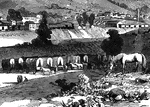
Village of Clarksburg
"Village of Clarksburg, Western Virginia, headquarters of General Rosecrans. Clarksburg, a post village,…
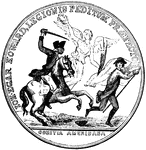
Howard Medal Front
"Silver medal awarded to Colonel Howard. The following are the device and inscriptions upon the front:…
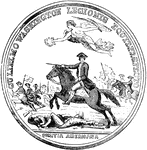
Washington Medal Front
"Silver medal awarded to Washington. The following are the device and inscriptions on the front: An…

Frederica
"Ruins of Oglethorpe's Barracks at Frederica. This is from a sketch made by W. W. Hazzard, Esq., in…

Agrimensor
"Agrimony (Agrimonia Eupatoria) showing branch, flowering spray, and fruit."-Whitney, 1902

Antheridia
"Image: Branch of Fucus. The organ cryptogamic plants which answers to the anther in the phanerogamic…

Anthozooids
"End of a branch of red coral of commerce, Corallium rubrum, with three anthozooids, A, B, C, in different…

Processionary Caterpillars
"If the guide stops a moment all the followers halt; if he continues the route, they all hasten after…

Processionary Caterpillars
"If the guide stops a moment all the followers halt; if he continues the route, they all hasten after…

Coral
"Coral is the name applied to the stony structures secreted by many of the actinozoa, and applied to…

Galvanic Battery
"Galvanism is the branch of electric science to which an experiment by Galvani gave birth. His wife,…
Cross-section from a shaft of a long bone
"Little openings (Haversian canals) are seen, and around them are arranged rings of bone with little…

Lateral section of the chest
"A, a muscle which aids in pushing the food down the esophagus; B, esophagus; C,…

Diagram of the circulation of the blood
"R.A., right auricle; L.A., left auricle; R.V., right ventricle; L.V.,…
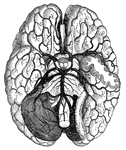
Blood vessels of the brain
"Arteries and their Branches at the Base of the Brain." — Blaisedell, 1904
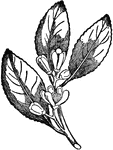
Lemon Branch
"The Lemon is the fruit of a small tree belonging to the same natural order as the orange. There are…
